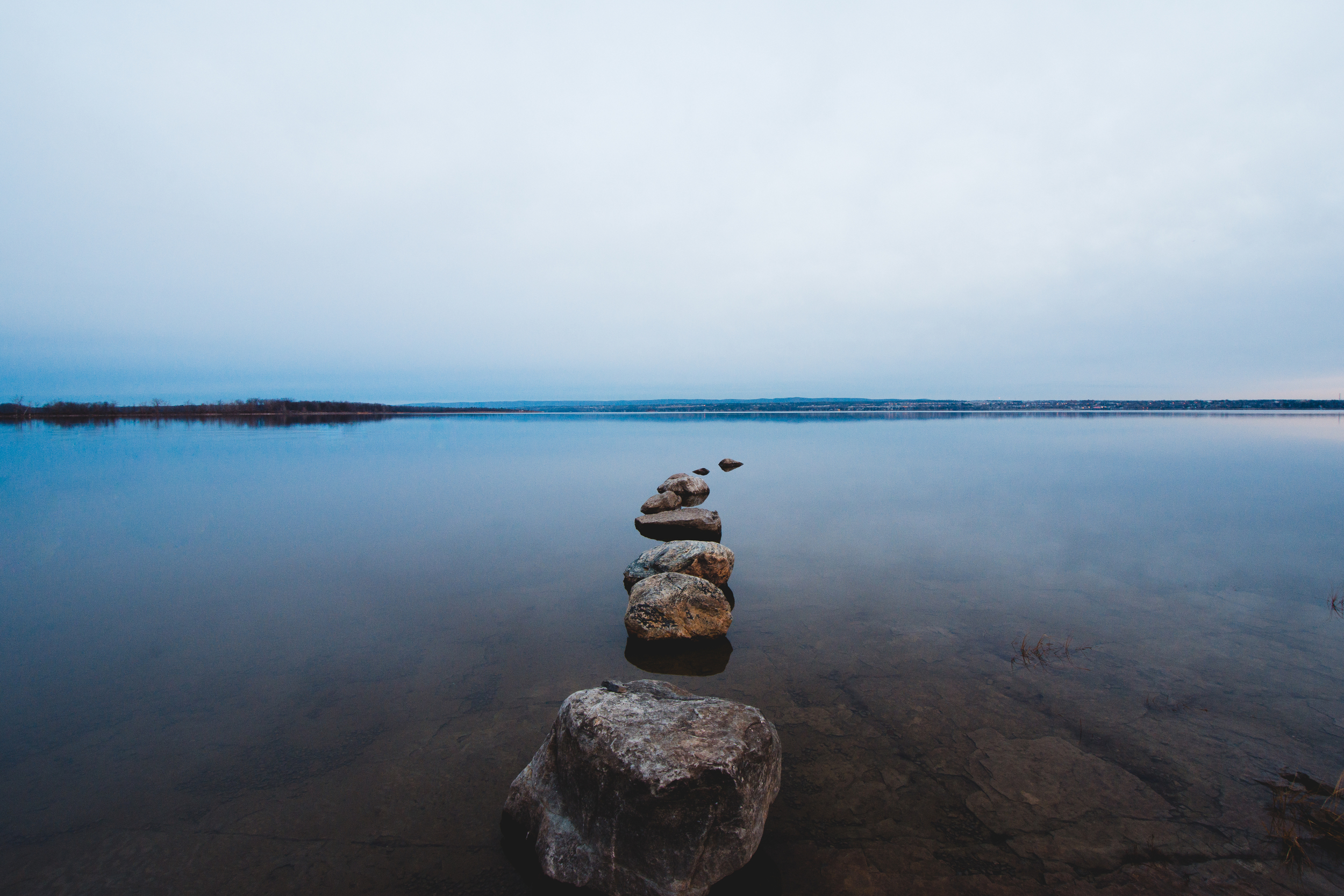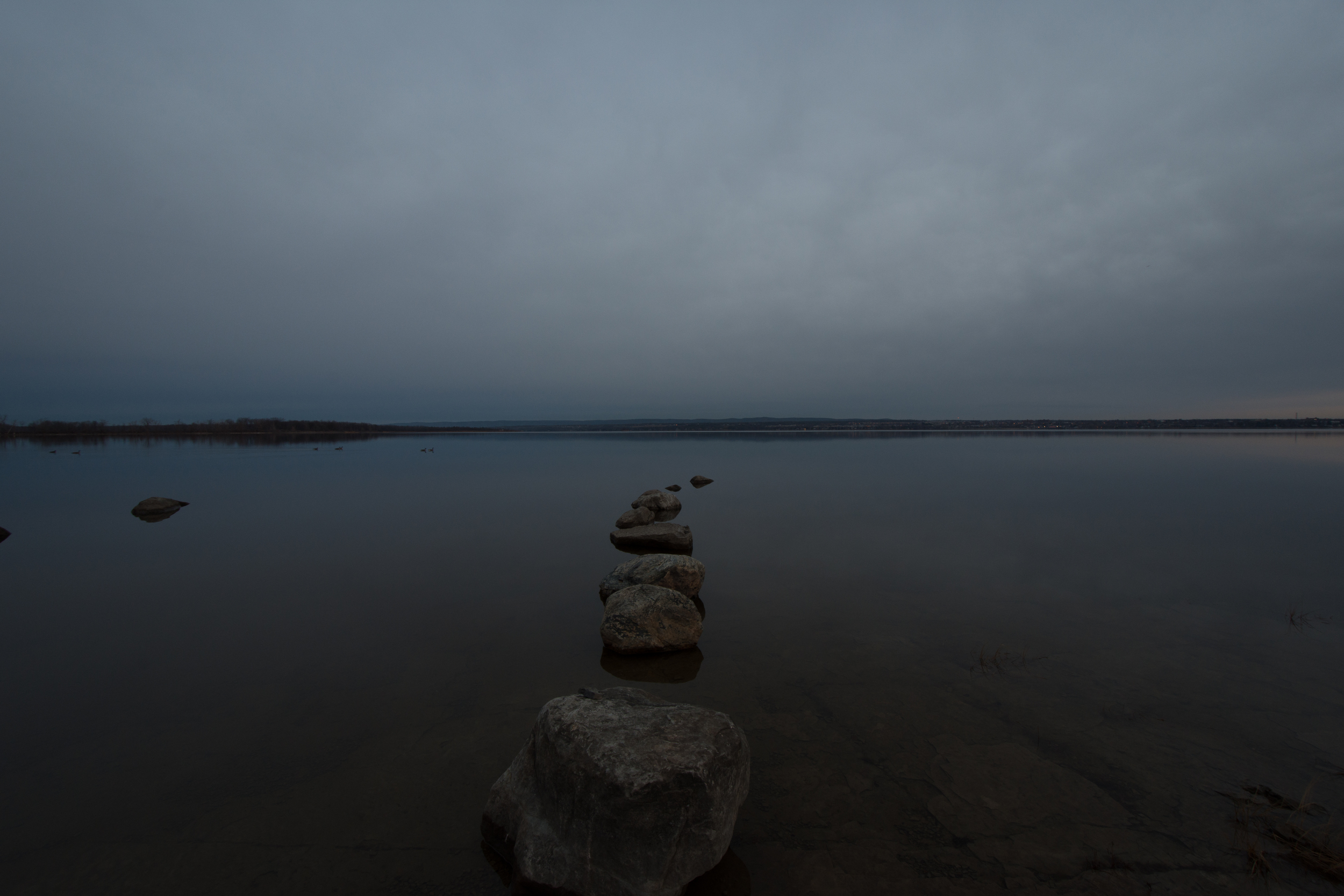Onix. f11 / 10mm / 1/10s / ISO 200
1. Climb on top of things.
This was not the shot I initially wanted from Shirley's Bay. I saw a shot on Ottawa Photography Network's Facebook Page of these rocks that I wanted to recreate. After setting up my tripod on the side and getting a dozen shots of these rocks, I was able to recreate the photo. As it did not take very long, and given that I was still within the golden hours, I decided to walk around and take a few more shots. Every beginner photographer is told to take photos from various angles and heights. So, being a good student, I decided to climb on one of these rocks and hastily take this shot. I shot this on the shortest end (10mm) and I think this turned out better than the image I initially wanted to create!
2. Watch the edges.
I need to be more aware of what is and what is not in my viewfinder. You will see in the photo above that the base of the rock on the foreground (closest to the viewer) is cut off. Had I taken one step back or even tilt back a little, I would have been able to take a shot that showed the whole rock, giving a more complete photo than what I have now. While I think this is an good photo overall, the perfectionist in me cannot help be distracted by the cut off rock. This is a very simple lesson that I often seem to forget.
3. Break the rule of thirds.
During the post-edit process, I had every intention of cropping this image in a way that follows the Rule of Thirds. This meant that the line of rocks would likely have been just off-center and not so symmetrical like that photo above. Like the golden-hour rule, the Rule of Thirds is, of course, just a guideline. Much can also be said about the value of symmetry in composition. In this particular photo, having the rocks cut through the center of the water, almost intersecting with the horizon, produces a more balanced image, than had it been cropped off-center. The symmetrical composition produces a more orderly image, which to me, adds to the serene or tranquil mood I am trying to convey.
4. Spot removal is your friend.
I am a firm believer of post-editing; I use Adobe Lightroom for all my post-process work. I have met many photographers, amateurs and veterans alike, who have lectured me on the unnatural-ness of post-editing, as if it is a lesser art than untouched, "pure" photos. There is certainly value in having elements of photography (composition, exposure, sharpness, etc.) done right while shooting. That said, there will be times when errors are made and post-editing, however extensive, is required. In this particular photo, there were a couple of smaller rocks on the far left side of the image. I used Lightroom's spot removal tool to cover these rocks by sampling a different area of the image and overlaying it where the smalls rocks were located. Like breaking the Rules of Third, the removal of these small rocks from the scenes contributes to the symmetrical composition and intended mood of the image.
5. Shoot Vertically.
From all the work involved in creating this image, one thing I realized I need to work on is the ability to compose and shoot images in vertical orientation. You will find that most of my work on this site are shot in horizontal composition. This may be just a style preference; I do find photos shot in landscape orientation more appealing. Or it could be just the type of scenes I have been shooting: landscapes, birds in flight, etc. In order for me to improve as a photographer, however, landscape or otherwise, I need to challenge myself by taking vertical photos. Vertical photos, and vertical landscapes in particular, are useful in conveying depth; if composed well, these these photos are often more dynamic; and apparently, they sell well as stock photos!



